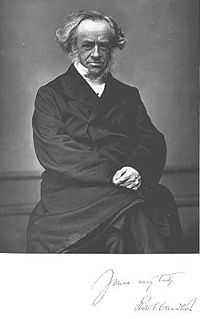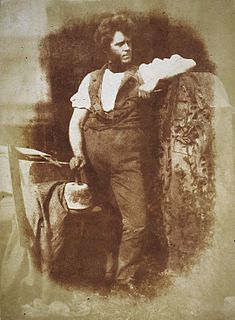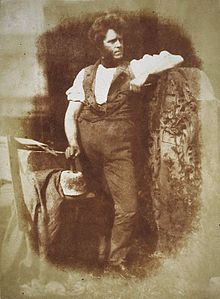
The Scotsman is a Scottish compact newspaper and daily news website headquartered in Edinburgh. First established as a radical political paper in 1817, it began daily publication in 1855 and remained a broadsheet until August 2004. Its parent company, JPIMedia, also publishes the Edinburgh Evening News. It had an audited print circulation of 16,349 for July to December 2018. Its website, Scotsman.com, had an average of 138,000 unique visitors a day as of 2017. The title celebrated its bicentenary on 25 January 2017.

The Free Church of Scotland is a Scottish denomination which was formed in 1843 by a large withdrawal from the established Church of Scotland in a schism or division known as the Disruption of 1843. In 1900, the vast majority of the Free Church of Scotland joined with the United Presbyterian Church of Scotland to form the United Free Church of Scotland. In 1904 the House of Lords judged that the constitutional minority that did not enter the 1900 union were entitled to the whole of the church's patrimony, the Free Church of Scotland acquiesced in the division of those assets, between itself and those who had entered the union, by a Royal Commission in 1905. Despite the late founding date, Free Church of Scotland leadership claims an unbroken succession of leaders going all the way back to the Apostles.

Robert Smith Candlish was a Scottish minister who was a leading figure in the Disruption of 1843. He served for many years in both St. George's Church and St George's Free Church on Charlotte Square in Edinburgh's New Town.

Hugh Miller was a self-taught Scottish geologist and writer, folklorist and an evangelical Christian.

Sir Robert Sibbald was a Scottish physician and antiquary.
The Lord Lieutenant of Nairn, is the British monarch's personal representative in an area which has been defined since 1975 as consisting of the local government district of Nairn, in Scotland, and this definition was renewed by the Lord-Lieutenants (Scotland) Order 1996. Previously, the area of the lieutenancy was the county of Nairn, which was abolished as a local government area by the Local Government (Scotland) Act 1973. The district was created, under the 1973 act, with the boundaries of the county, as a district of the two-tier Highland region and abolished as a local government area under the Local Government (Scotland) Act 1994, which turned the Highland region into a unitary council area.

The Grange is an affluent suburb of Edinburgh, just south of the city centre, with Morningside and Greenhill to the west, Newington to the east, The Meadows park and Marchmont to the north, and Blackford Hill to the south. It is a conservation area characterised by large early Victorian stone-built villas and mansions, often with very large gardens. The Grange was built mainly between 1830 and 1890, and the area represented the idealisation of country living within an urban setting.

Monkcastle, sometimes known as Old Monkcastle formed a small estate in the Parish of Kilwinning, North Ayrshire lying between Kilwinning and Dalry on the A737. The property was originally held by the Tironensian monks of Kilwinning Abbey and was probably the site of the abbot's country retreat. The 17th-century Monkcastle is a category B listed ruin, although it has been consolidated and stands next to a private house, constructed from the converted old home farm buildings. The 19th-century mansion of Monkcastle House is nearby, and is also category B listed. The castle may have been used as a dower house or retreat.
Events from the year 1815 in Scotland.
Events from the year 1810 in Scotland.
Events from the year 1835 in Scotland.
Events from the year 1827 in Scotland.
Events from the year 1822 in Scotland.
Events from the year 1802 in Scotland.
Events from the year 1756 in Scotland.
Events from the year 1718 in Scotland.
Hugh Miller FRSE FGS (1850–1896) was a Scottish geologist, son of his more famous father, the geologist and folklorist Hugh Miller.

Sir James Miller was a Scottish businessman and politician, who served as Lord Provost of Edinburgh and Lord Mayor of London. As an architect, engineer and house-builder he founded the firm Miller Homes in 1934.

Sir William Miller, Lord Glenlee, 2nd baronet of Glenlee, FRSE (1755-1846) was a Scottish advocate, law lord and landowner.
Thomas Smith was a Scottish missionary and mathematician who was instrumental in establishing India's zenana missions in 1854. He served as Moderator of the General Assembly of the Free Church of Scotland 1891/92.










